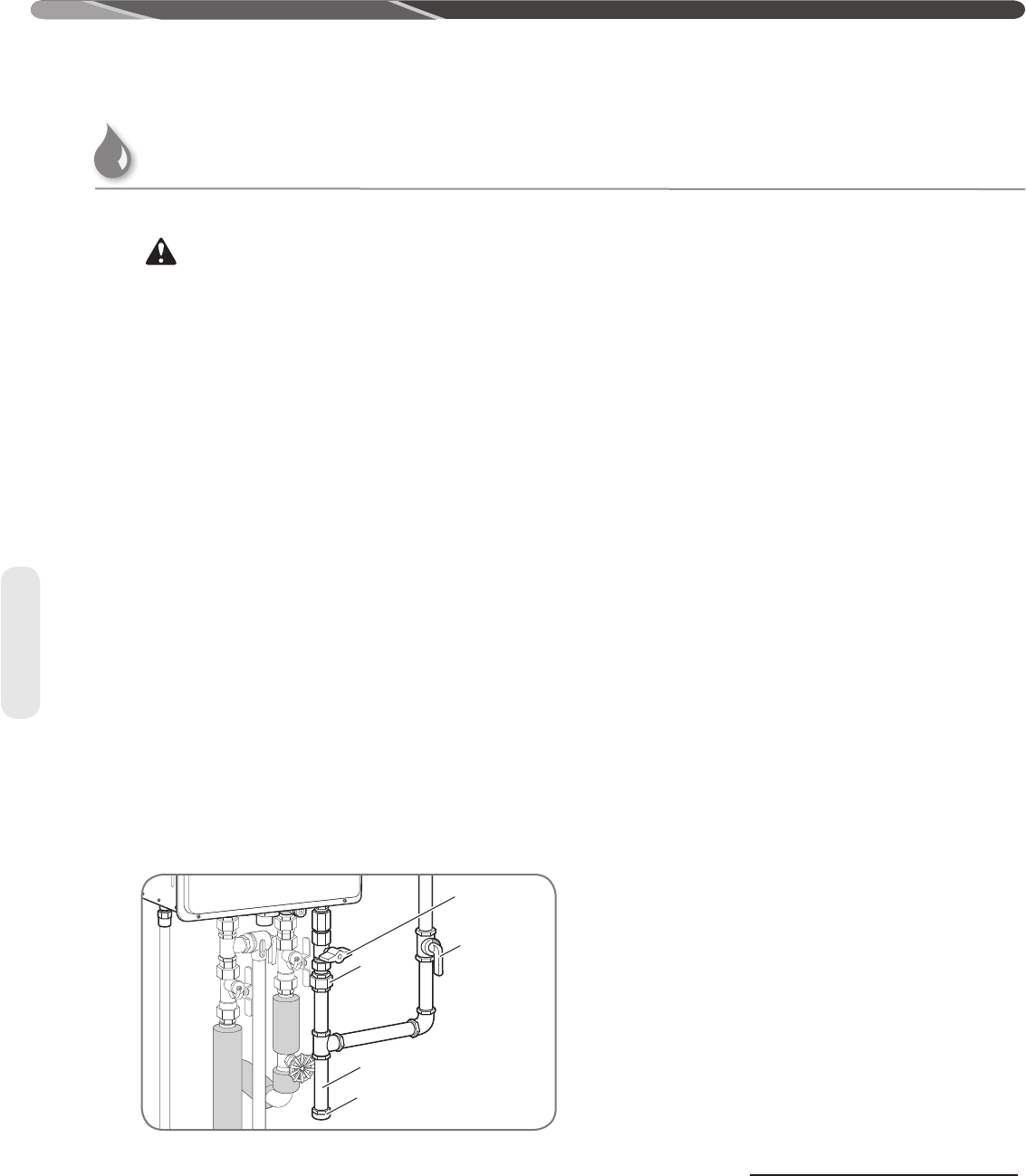Use and Care Manual

54
Gas Supply
INSTALLATION INSTRUCTIONS
Gas Supply System
WARNING:
DO NOT attempt to convert this water heater for use with
a different type of gas other than the type shown on the
rating plate. Doing so could result in death, personal injury,
explosion or fire, product damage, and/or poor operating
conditions or performance.
NOTICE:
• Gas piping shall be in accordance with local utility
company requirements and/or in the absence of local
codes, use the latest edition of National Fuel Gas Code
(NFGC), ANSI Z223.1. In Canada, use the latest edition of
CAN/CSA B149.1, Natural Gas and Propane installation
code.
• Apply a thin coat of pipe compound to all threaded male
ends. Compound must be of the type resistant to the
action of LP gas.
• To ensure proper water heater operation, the gas pipe and
gas meter must be sized correctly.
• If flexible connectors are used, the minimum inside
diameter must be 3/4" or greater and the rated capacity
of the connector must be equal to or greater than the
BTU capacity of the water heater. See manufacturer
information for the gas connector. Lengths over 36 inches
are not recommended.
• DO NOT use excessive force when tightening the pipe
sections. Excessive force can damage the water heater,
especially when Teflon pipe compound is used.
Gas Supply
Union
Manual Gas
Supply Line
Shut-O Valve
Cap
Sediment Trap
Manual Gas
Shut-O Valve
Gas Piping
Pipe-Sizing Procedure – The gas supply system must
be properly sized to ensure the proper operation
of this tankless water heater as well as all the gas
appliances on the system. Failure to ensure the gas
system, (meter, regulators, and piping) are properly
sized could result in improper operation of this or other
gas appliances. Insufficient gas pressure/supply can
cause pilot outages, lockouts, or operating conditions
that could lead to an appliance failure, improper
combustion, carbon monoxide, sooting, or fire. Gas
line sizing is based on gas type, the pressure drop in
the system, the gas pressure supplied, and the gas line
type. For gas pipe sizing in the United States, refer to
the National Fuel Gas Code, (NFPA 54, ANSI Z223.1).
For Canadian gas pipe sizing, refer to the Natural Gas
and Propane Installation Code CAN/CSA B149.1.
These simplified instructions only address low pressure
gas systems using Schedule 40 Metallic Pipe (Black
Iron). For hybrid gas systems, high pressure main
lines with regulators at the appliances, gas systems
piped with corrugated stainless steel tubing (CSST), or
Propane gas systems.
Determining the required
regulator and gas meter size.
Find the BTU capacity of each appliance on the
system. This information is located on a rating label
attached to the appliance. Total the BTU of all the
appliances together and divide that by the heating
value of the fuel (for natural gas the average is 1,024 or
2,546 for propane). This will give you the total cubic feet
per hour of gas required for the system.
At your gas meter/regulator there will be a rating plate
that gives the cubic feet per hour capacity of that
equipment. If the total gas required for the system is
greater than the rating of the meter/regulator then the
local gas company will need to be contacted in order
to upgrade the meter/regulator for the system.
Cubic Feet
Per Hour (CFH) =
Gas Input of
Water Heater (BTU/HR)
Heating Value of Gas (BTU/FT
3
)










